Google AdWords for online shops: How to create campaigns that convert
In this article, StoreYa CEO Yariv Dror explains what merchants need to know about starting their ad campaigns with Google AdWords.
Getting highly targeted traffic is the number one goal for eCommerce store owners. Why? Because they know that any old traffic doesn’t bring in those conversions; targeted traffic does, and one of the most effective ways to bring in that much-needed traffic is with Google AdWords.
Google AdWords can be a tricky business to new advertisers who don’t know their way around optimisation, because as any pro will tell you, the key to getting the best conversion results is in the tweaking. This can feel like a full-time job, but we at StoreYa, the developers of the Traffic Booster, are here to tell you that it doesn’t have to be. Our CEO, Yariv Dror, has got over ten years of AdWords experience that he has gained from campaigns amounting to $10 million…
Today, he is going to share all that experience with you to give you the head start you need to turn your AdWords campaign into money, with this AdWords how-to video and guide tutorial. So sit back, grab your notebook and get ready for these AdWords musts.
Below is a summary of Yariv’s most important points.
1. How to choose the most relevant advertising method
The first thing to determine is what advertising format will work best for your online store. Google AdWords has two main types of advertising methods: search and display. Here is a summary of each.
Google Search Network
These are the ads that show up in a search page, after a user has searched by keyword terms. You have a lot of variety with search ads as they can be dynamic or static, they can lead to your website or prompt a direct phone call, or they can include an image and text in the form of Google Shopping advertising. Search ads do cost more, but yield much better results for small to medium online stores.
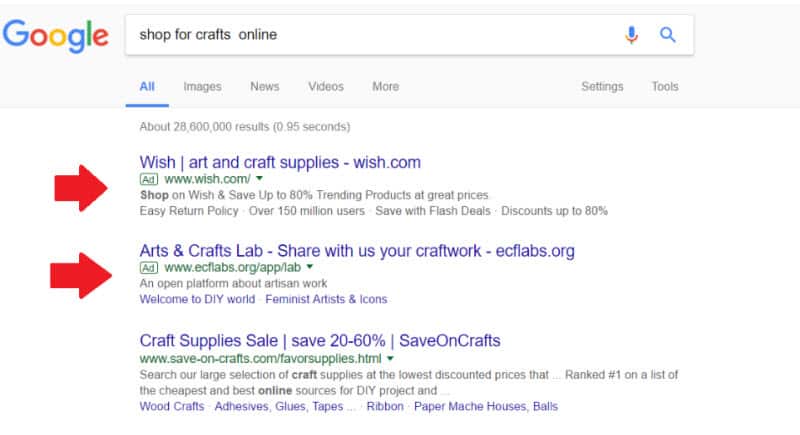
Ads in the Google Search Network
Google Display Network
Google Display Ads are shown to users on third party sites, and are chosen either by previous site visits (remarketing) or by content relevance. Although these ads are cheaper and can do wonders for those ‘sexy’ products, your ads need to be very visually appealing in order to attract your potential shoppers and can be far less engaging.
2. How to design the most effective campaign structure
As Yariv explains, ad structure is vitally important to being optimised; test your ads to ensure you are bringing in the best results. A good example of a well-structured account is this:
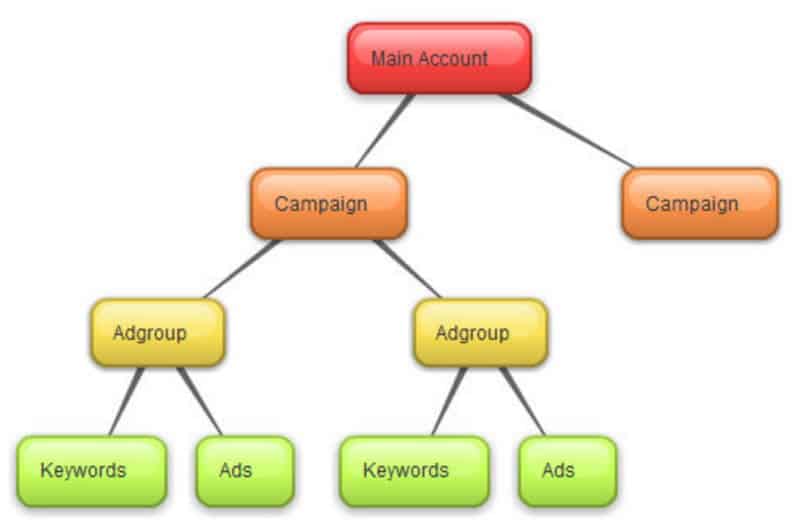
Example of a campaign structure
Campaigns: They allow you to keep tight control of your geo-targeting, languages, budget and scheduling.
Ad Groups: This is where you can control your bids.
Keywords: where you place the keywords you wish to bid on or be found by.
Ads: this is where you have text, banner, and combination ads, as well as the destination URL for each of your ads.
3. Getting your keyword research right
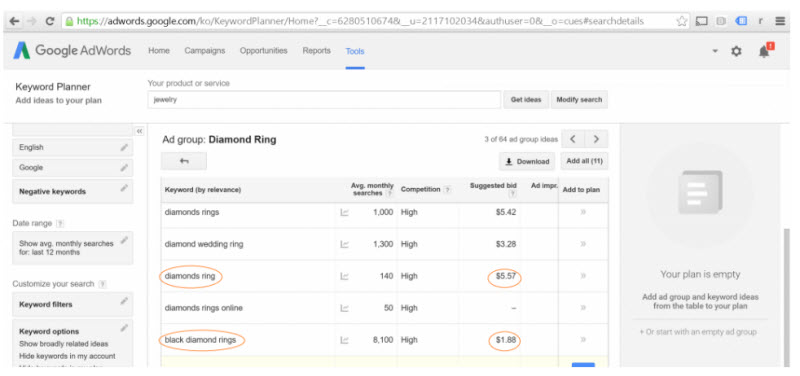
The Google Keyword Planner
Your keywords are vital as they will trigger which searches your ads are shown on. The important thing to remember is that you will want to balance the price you are willing to spend versus the relevance of the keyword. The price you will pay is determined by the amount of competition there is for that specific word or phrase.
As Yariv explains, it is a balancing act. You should incorporate long-tail keywords, which will cost you less and help avoid stiff competition, with short phrases and words. You should also be using negative keywords to ensure you are driving relevant traffic.
4. How to define the budget for each campaign
As Yariv discussed, you set bids by ad groups and budgets in campaigns. Your budget should be an amount of money you are willing to spend. To determine this, think about the amount of products you wish to sell and how much time you need to sell them in. As a rule of thumb, Yariv suggests that you spend the equivalent of two or three times the cost of one product over the first few days and then optimise from there.
With regards to bid amounts, start smaller than the suggested bid, increasing or decreasing depending on the results as discussed further in the video.
5. Ad creation pro tips
As we learned in the video, a bad CTR (click through rate) will cause your cost per click to increase. However, you also want to only get clicks that bring in targeted potential shoppers. To do that you will want to make sure your ad text matches not only the keywords you are bidding on, but the information on the landing page you are sending them to. Kind of like, “What you see is what you get!” This will ensure you attract more people who are willing to buy what you are selling, as well as ensuring good relevancy, which will increase your quality score.
Your ads should have a clear CTA (call to action), be correctly capitalised and where possible include symbols and numbers to rev up your CTRs.
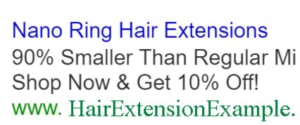
Good example
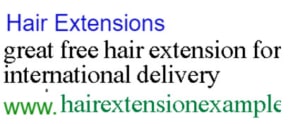
Bad example
And don’t forget your limitations when it comes to static text ads:
- Headline – up to 25 characters
- 2 description lines and a Display URL of up to 35 characters each
6. Finding the perfect landing page match for your ad
Landing pages are another very important AdWords consideration. As we mentioned, they should include the content that your ad promises, to ensure this destination URL is indeed what the searcher is looking for. Don’t forget to make sure that the keywords used to bring them to your destination URL are displayed on your page and that the next desired action is clear. This will ensure your ads are relevant and help you maintain a good quality score – something that will affect how much you ultimately are paying for each click.
7. Key to optimisation: Implementing tracking and reporting codes
Getting clicks on AdWords is easy, this is what Google sells. You have to be able to track their performance in order to optimise your campaigns! As any AdWords expert will tell you, campaign monitoring and tweaking is the cornerstone of getting your adwords to work. To do this effectively, you need to implement tracking reporting codes so that you can track your results efficiently and adapt your campaigns as and when needed based on the data. The most important tracking tool is Google Analytics code for tracking AdWords pixels.
8. Optimizing like the pros
Last but not least, once setup is complete you will need to tweak, tweak, tweak! You will want to test each of your market segments, shopper locations and products to find the right ad, keyword and targeting for your products and site. This is far more time-consuming than setup, however it is your most important guide to ensure your ads are working. Here are Yariv’s top tips:
Dynamic Ads
When Yariv was introduced to this feature after many years of working with AdWords, it blew his mind and it is one of his most favorite features to work with.
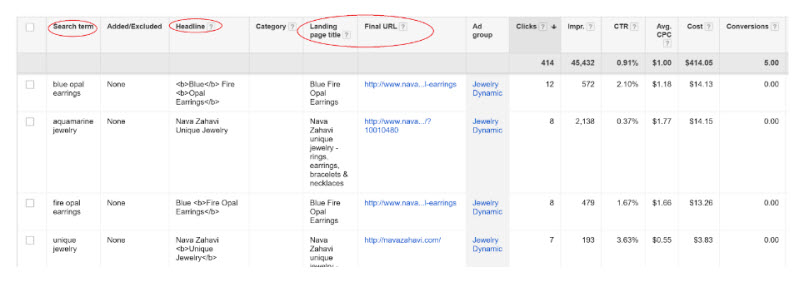
Using Dynamic Ads
Dynamic Ads involves Google dynamically deciding who to target your ads to, your headline text and your destination URL, taking some of the administrative work out of running your AdWords campaigns. The pro tip with working with these ad types is to see your top performing queries from your dynamic ads, move them to your static ads while excluding them from your dynamic, enabling you to build a highly effective keyword list. A list that you can bid directly on and optimise for even better results.
Bid Balance
Optimizing your Google AdWords ads correctly will ensure that you get the most effective cost per click. In other words, you are spending the right amount of money for the amount of clicks you are getting; clicks that should be targeted and resulting in sales.
To optimise this, Yariv explains that you need to find the balance that lets you spend the budget you have decided to spend (provided, of course, that the budget is bringing you a positive ROI). To do this, he explains, start with any bid. If you didn’t spend your desired daily budget, increase the bid by 10% and wait a day. If you didn’t spend the budget again, increase the bid again. If you have spent the budget, decrease your bid by 5% and check again, and again the day after that. Keep on doing this as budget and bids are influenced by competition, seasons and other factors, so the right balance today might not work as well tomorrow.
Alternatively, if you have some coding knowledge, Google offers scripts you can develop to run this procedure for you.
There you have it, lots of expert advice in just ten minutes. If you feel like AdWords takes up time, you are not alone. Like we mentioned in the beginning, to really get the results you need to be invested in the optimisation process. For those of you who would rather concentrate on doing the stuff you love and outsourcing AdWords, it doesn’t have to cost you the earth. Yariv and the team have a great automatic tool called the Traffic Booster, which does everything mentioned in this video and then some. Its clever algorithm brings in far better results for very little spend and takes all the work out of driving that awesome targeted traffic.
forma parte del equipo de comunicación de ePages.
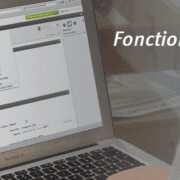

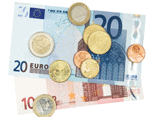
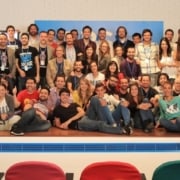

Leave a Reply
Want to join the discussion?Feel free to contribute!